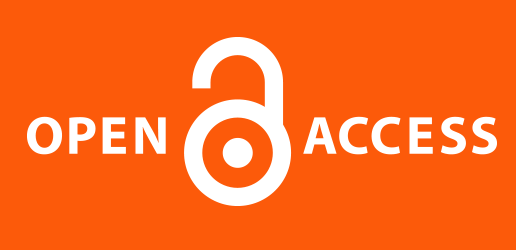|
International Journal for Research Trends and Innovation
International Peer Reviewed & Refereed Journals, Open Access Journal
ISSN Approved Journal No: 2456-3315 | Impact factor: 8.14 | ESTD Year: 2016
Scholarly open access journals, Peer-reviewed, and Refereed Journals, Impact factor 8.14 (Calculate by google scholar and Semantic Scholar | AI-Powered Research Tool) , Multidisciplinary, Monthly, Indexing in all major database & Metadata, Citation Generator, Digital Object Identifier(DOI)
|
Issue: October 2025
Volume 10 | Issue 10
Review Result and Publication of Paper within : 2-3 days
Click Here For more DetailsFor Authors
Forms / Download
Published Issue Details
Editorial Board
Other IMP Links
Facts & Figure
Impact Factor : 8.14
Issue per Year : 12
Volume Published : 10
Issue Published : 113
Article Submitted : 18248
Article Published : 7789
Total Authors : 20583
Total Reviewer : 750
Total Countries : 142
Indexing Partner
Licence
This work is licensed under a Creative Commons Attribution-NonCommercial 4.0 International License







|
Published Paper Details
|
|
| Paper Title: | Prospective teachers` creative thinking processes in solving contextual problems: cases of the higher and lower self-efficacy |
| Authors Name: | Endang Suprapti , Tatag Yuli Eko Siswono , Manuharawati |
| Download E-Certificate: | Download |
| Author Reg. ID: |
IJRTI_189939
|
| Published Paper Id: | IJRTI2405079 |
| Published In: | Volume 9 Issue 5, May-2024 |
| DOI: | |
| Abstract: | This research aims to describe the creative thinking process of prospective elementary education teacher students based on self-efficacy in solving contextual problems. This qualitative-exploratory research involved two prospective elementary school teacher students with high and low self-efficacy. Data was collected using task-based interviews and analysis using interactive method that consist of condensation, data exposure, data interpretation, and verification methods. Prospective teacher students with high self-efficacy (HSE) in solving contextual problems can better apply creative thinking processes, especially at the stages of building ideas, planning ideas, and implementing ideas. HSE can find more than one solution correctly, while prospective teacher students with low self-efficacy (LSE) in solving contextual problems can only find one solution. Prospective teacher students with high self-efficacy can apply the four stages of creative thinking well and appear fluent, flexible, and novelty in solving contextual problems. In contrast to students with low self-efficacy at the stage of the creative thinking process, they seem only to meet the criteria for fluency but need to meet the indicators for flexibility and novelty. |
| Keywords: | Creative Thinking Process, prospective teacher students, Self-Efficacy. |
| Cite Article: | "Prospective teachers` creative thinking processes in solving contextual problems: cases of the higher and lower self-efficacy", International Journal of Science & Engineering Development Research (www.ijrti.org), ISSN:2455-2631, Vol.9, Issue 5, page no.551 - 560, May-2024, Available :http://www.ijrti.org/papers/IJRTI2405079.pdf |
| Downloads: | 000205098 |
| ISSN: |
2456-3315 | IMPACT FACTOR: 8.14 Calculated By Google Scholar| ESTD YEAR: 2016 An International Scholarly Open Access Journal, Peer-Reviewed, Refereed Journal Impact Factor 8.14 Calculate by Google Scholar and Semantic Scholar | AI-Powered Research Tool, Multidisciplinary, Monthly, Multilanguage Journal Indexing in All Major Database & Metadata, Citation Generator |
| Publication Details: |
Published Paper ID: IJRTI2405079
Registration ID:189939
Published In: Volume 9 Issue 5, May-2024
DOI (Digital Object Identifier):
Page No: 551 - 560 Country: Surabaya, -, Indonesia Research Area: Social Science and Humanities Publisher : IJ Publication Published Paper URL : https://www.ijrti.org/viewpaperforall?paper=IJRTI2405079 Published Paper PDF: https://www.ijrti.org/papers/IJRTI2405079 |
| Share Article: | |
|
Click Here to Download This Article |
|
| Article Preview | |
|
|
|
Major Indexing from www.ijrti.org
| Google Scholar | ResearcherID Thomson Reuters | Mendeley : reference manager | Academia.edu |
| arXiv.org : cornell university library | Research Gate | CiteSeerX | DOAJ : Directory of Open Access Journals |
| DRJI | Index Copernicus International | Scribd | DocStoc |
ISSN Details
 |
 |
ISSN: 2456-3315
Impact Factor: 8.14 and ISSN APPROVED,
Journal Starting Year (ESTD) : 2016
DOI (A digital object identifier)
 Providing A digital object identifier by DOI.ONE How to Get DOI? |
Conference
Open Access License Policy
Important Details
Join RMS/Earn 300
WhatsApp
Click Here
Click Here
Indexing Partner |
|||
| Copyright © 2025 - All Rights Reserved - IJRTI | |||






